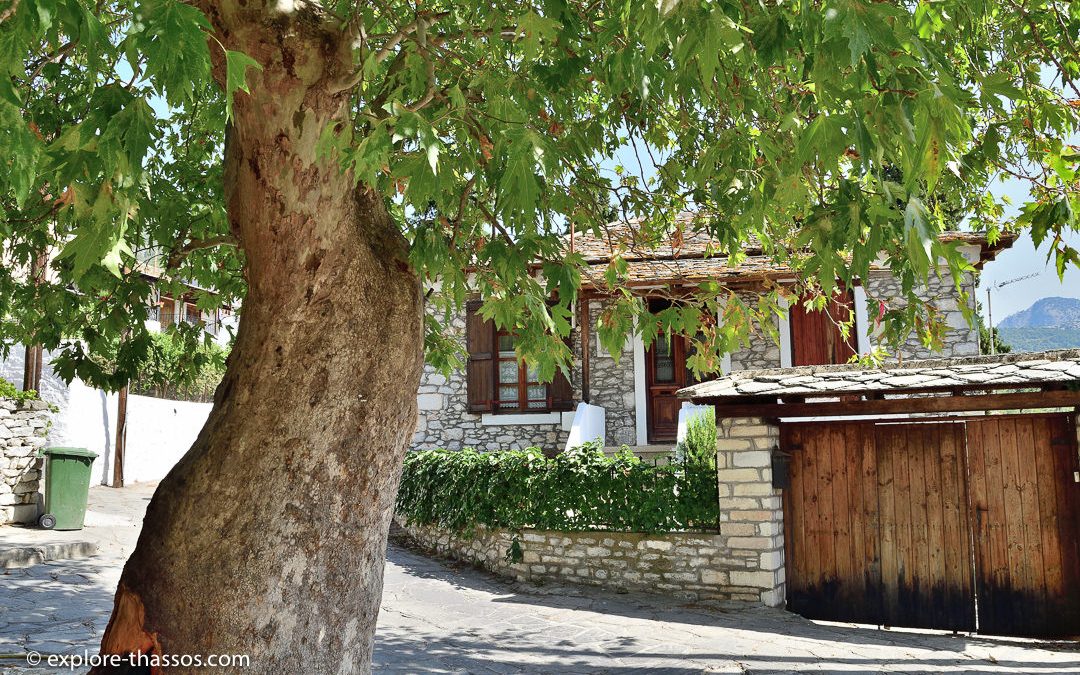A beautiful mountain village, that was once the capital of the island for many years. It features many traditional taverns that offer spit-roasted goat and pork, as well as other delicious grilled food (lamp, kokoretsi etc) in a quiet, idyllic environment with mountain view. Eating is often accompanied by traditional dances and songs of Thassos. It is a village that remains alive, despite the tendency of the islanders to move to coastal places.
With ancient history, as evidenced by the settlement and necropolis that date before the 8th century BC, but also byzantine history. The byzantine emperor Andronikos II Palaiologos mentions in the 13th century that the Philotheou monastery of Mount Athos had a glebe in the name of Evangelist and Theologist John in the location of the village, hence its name.
For a long time it was the administrative capital of the island, when all the coastal places were abandoned due to fear of pirates and the inhabitants moved toward mountain regions, invisible from the sea. The location that was chosen for the village was pretty strict, the soil rocky and hard, but the view, so beautiful, compensates for the frugal landscape. The village evolved quickly, spread in two settlements and had two parishes and two schools. It defined a large territory, that extended up to the sea, with the coastal settlements of Potos and Astris. During the period that was granted to the Pasha of Egypt Mehmet Ali (1813), the village blossomed and enjoyed privileges of autonomy, under the command of the local lords. In spite of this it participated in the Revolution of 1821, with Chatzigiorgis as leader. It was liberated in 1912.
In the village, that has been declared protected and traditional, stone-built houses with impressive architecture are preserved, like the manor house of Eleni Tziata, the parental house of the known author Vasilis Vasilikos and Chatzigiorgi’s manor house. The charming traditional architecture of the houses generated the interest of many foreigners, mostly Germans, thus many houses were bought and conserved by them.
A paved main road runs though the village, that leads the steps of the visitor through the picturesque neighborhoods and the old churches of Agia Paraskevi and Agios Dimitrios, with the famous wood-carved temple. Especially loved by the locals are the small chapels of Panagouda and Archaggelos, with the unique byzantine mural of 1430 AD. Also impressive is an arched bridge of epirotic architecture, found outside of the village.
The locals uphold religiously the customs and traditions, and in order to show a part of their rich folklore they reenact a thassian marriage during summer, an event that attracts plenty of tourists.


